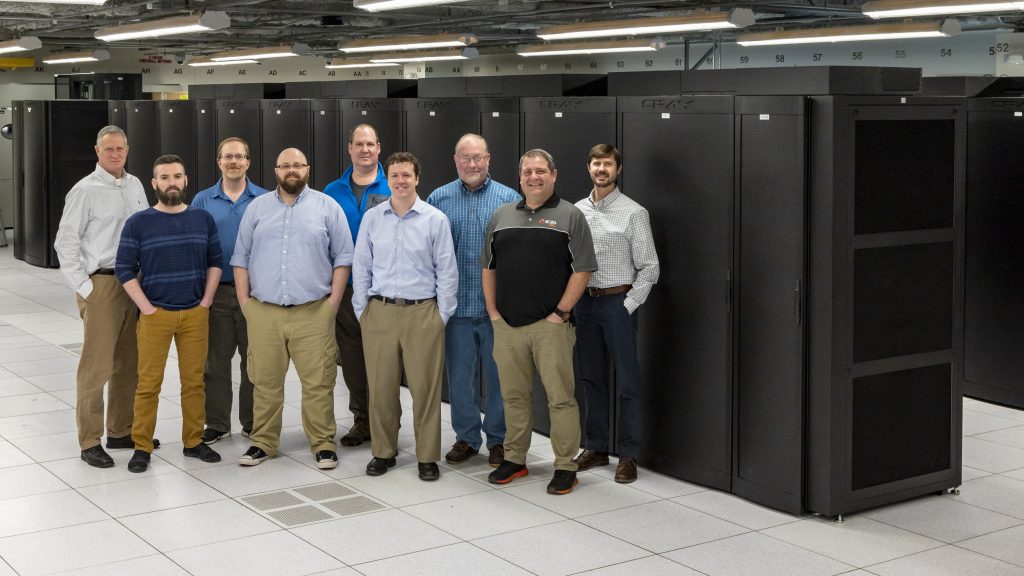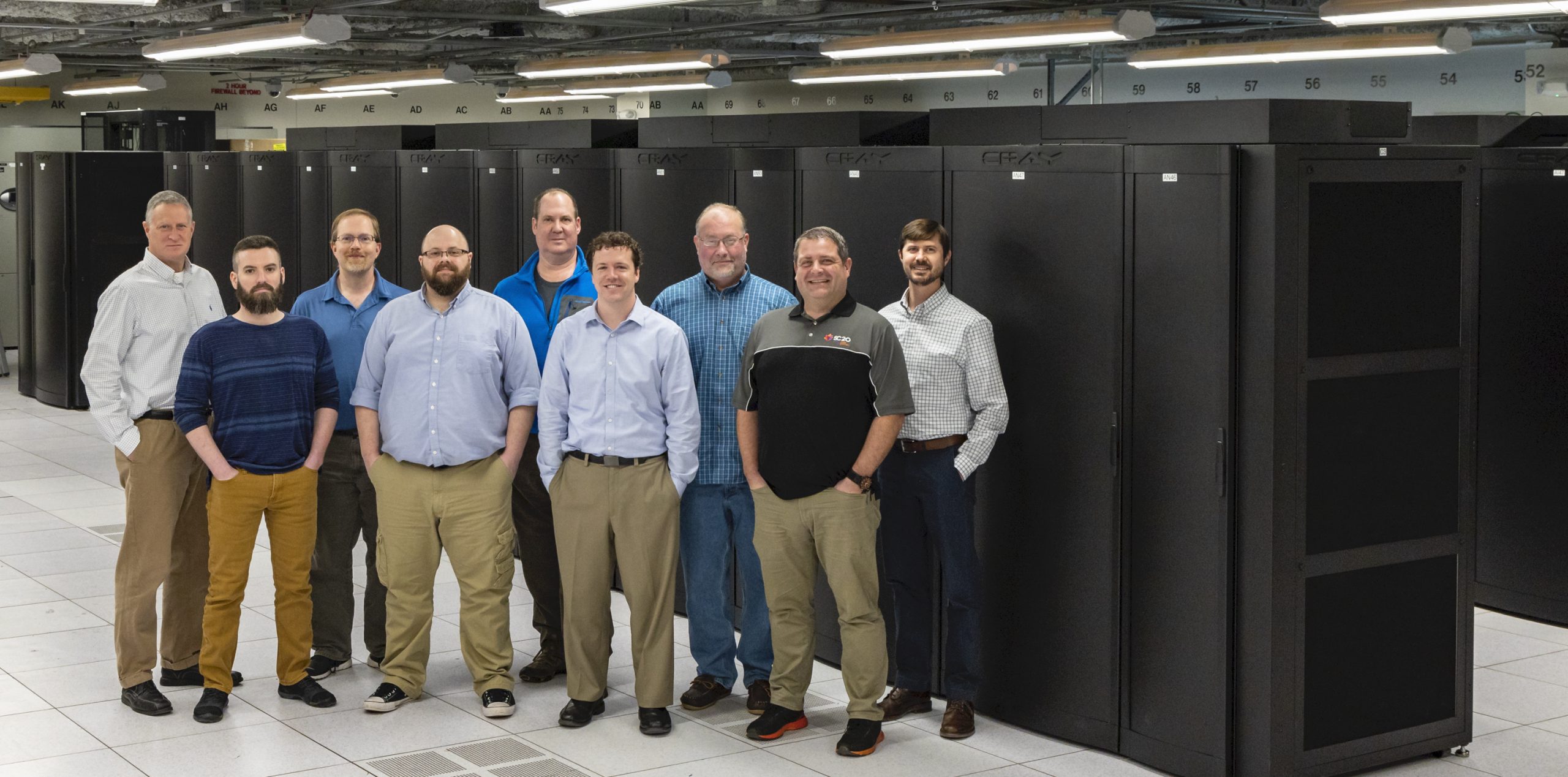The US Department of Energy (DOE) and the National Oceanic and Atmospheric Administration (NOAA) have formally agreed to renew their strategic partnership to run and manage the National Climate-Computing Research Center (NCRC).
For the past decade, the NCRC has provided a supercomputer platform for NOAA scientists to define the leading edge of global climate simulations. Located at DOE’s Oak Ridge National Laboratory (ORNL), the NCRC uses high-performance computing (HPC) systems procured and operated by personnel from the National Center for Computational Sciences (NCCS). This new agreement will extend their partnership for another 5 years, building upon the agencies’ previous accomplishments by funding a new series of technical and scientific projects as well as installing an entirely new HPC system.
“Our common goal is to develop, test, and apply state-of-the-science computer-based global climate simulation models, based upon a strong scientific foundation while leveraging leading–edge HPC and information technologies,” said Jim Rogers, ORNL’s liaison for the program as well as NCCS computing and facilities director. “The objective is to increase dramatically the resolution, complexity, and throughput of computer model–based projections of climate variability and change to enable sound decision-making on issues of national importance, such as future energy use and technology options.”
The NCRC was established by NOAA and the DOE in a 2009 partnership agreement that sought to greatly boost NOAA’s climate-modeling capabilities with HPC and in turn “facilitate understanding climate change, mitigation strategies, and adaptation options for the nation.” In 2010, the center was initially equipped with a 260-teraflop (a trillion floating-point operations per second) Cray XT6, but over the years the NCCS has installed four different systems under the name Gaea (the Mother Earth figure in Greek mythology). Gaea currently consists of a pair of Cray XC40 supercomputers, capable of 5.29 petaflops (a quadrillion floating-point operations per second).

Dignitaries from NOAA visit the ORNL computer room, December 16, 2010. Image Credit: Jason Richards, ORNL
Under the new interagency agreement, a competitive acquisition process has been launched to select a new NCRC supercomputer for installation in 2021. Rogers said he expects the updated system to raise Gaea’s performance capability to around 10 petaflops (1,000 million million floating-point operations per second) of peak computing—even without GPU accelerators installed.
Gaea’s principal user is the Geophysical Fluid Dynamics Laboratory (GFDL), NOAA’s science unit dedicated to “advancing the scientific understanding of the physical, dynamical, chemical, and biogeochemical processes governing the behavior of the atmosphere, oceans, land, and ice components and their interactions with the ecosystem.” GFDL began its pioneering research into climate modeling in 1955 and now develops ever-more complex Earth system models and computer simulations to study all aspects of the climate, sharing its data with scientists around the world.
With its HPC resources, the NCRC contributed to the accelerated development and deployment of NOAA’s unified modeling suite of four major configurations: weather and subseasonal-to-seasonal forecasting (SHiELD), seasonal-to-multidecadal forecasting (SPEAR), high-resolution-ocean-based climate modeling (CM4), and Earth system modeling (ESM4). These configurations will form the basis for further model development and specialized configurations for a diverse range of understanding and prediction objectives.
“Gaea is crucial to GFDL’s mission. We are continually pushing the boundaries of Earth system science and seamless modeling. By seamless, I mean using one modeling framework to simulate and investigate timescales from hours (weather) to decades and beyond (climate),” GFDL Deputy Director Whit Anderson said. “The interest in and request for the components (for example, FV3 and MOM6) and configurations (such as CM4 or SPEAR) of this system have grown substantially over the last decade. We expect that to continue and likely ramp up. Having the highest level of uptime, performance, and support is essential to us meeting these needs. Having complete confidence in our partnership with NCRC/ORNL has been and will be a critical part of our success.”
In addition to further advancing NOAA’s state-of-the-science Earth modeling simulations, the renewed interagency agreement will also establish a new series of interagency collaborative projects over the next 5 years. Funded by an allocation of up to 10 percent of the program’s annual budget, the projects will explore technical and scientific research topics of interest to both NOAA and the DOE.
Over the last decade, the NCRC’s computer modeling simulations have resulted in groundbreaking climate science research—but it couldn’t have been achieved without the strong partnership underlying this intricate work.
“The project has grown significantly since its inception—managing and using systems at this scale does not come without challenges. The relationship built over the years has helped to navigate the complexities,” said Chris Fuson, NCRC program manager and head of NCCS’s User Assistance—Production Systems Group. “As we move forward, we will continue to use the best practices and lessons learned through the years to continue to improve not only this partnership but other partnerships at the NCCS.”

ORNL’s NCRC team manages the Gaea supercomputer system for NOAA, operating as a “mini NCCS.” From left: Jim Rogers, Philip Curtis, Daniel Pelfrey, Cory Stargel, Roy Etheridge, Matthew Ezell, Benton Sparks, Kevin Bivens, Chris Fuson. Image credit: Carlos Jones/ORNL
UT-Battelle LLC manages Oak Ridge National Laboratory for DOE’s Office of Science, the single largest supporter of basic research in the physical sciences in the United States. DOE’s Office of Science is working to address some of the most pressing challenges of our time. For more information, visit https://energy.gov/science.





